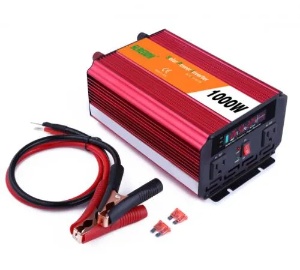Electronic Components Supplier | Transformers, Inductors, Inverters
Key Features of Oil-Immersed Distribution Transformers
An oil-immersed distribution transformer is a type of electrical transformer that uses insulating oil as both a coolant and dielectric medium. These transformers are widely used in power distribution networks to step down voltage levels (typically from 11kV/33kV to 415V/240V) for industrial, commercial, and residential applications.

-
Cooling & Insulation
-
Mineral oil or synthetic ester oil is used to dissipate heat and provide electrical insulation.
-
The oil also prevents oxidation and moisture absorption, extending transformer life.
-
Construction
-
Core: Made of laminated silicon steel to reduce eddy current losses.
-
Windings: Copper or aluminum conductors (HV & LV windings).
-
Tank: Sealed or conservator-type (with a breather to prevent moisture ingress).
-
Bushings: Porcelain or polymer insulators for cable connections.
-
Radiators/Fins: Enhance cooling by increasing surface area.
-
Types
-
Hermetically Sealed: Fully sealed to prevent oil oxidation (no conservator).
-
Conservator-Type: Uses an oil expansion tank (conservator) with a breather.
-
ONAN (Oil Natural Air Natural): Passive cooling (natural oil & air circulation).
-
ONAF (Oil Natural Air Forced): Fans are added for better cooling at higher loads.
-
Advantages
-
Efficient heat dissipation, allowing higher load capacity.
-
Long service life (20-30 years with proper maintenance).
-
Reliable performance in varied environmental conditions.
-
Lower initial cost compared to dry-type transformers.
-
Disadvantages
-
Fire risk due to flammable oil (requires fire safety measures).
-
Regular maintenance needed (oil testing, leakage checks).
-
Environmental concerns (oil disposal, potential spills).
-
Applications
-
Power distribution networks (utility substations).
-
Industrial plants, commercial buildings, and residential complexes.
-
Renewable energy systems (solar/wind farms).

Maintenance Requirements
-
Oil Testing: Check dielectric strength, moisture content, and acidity.
-
Leak Inspection: Ensure no oil seepage from gaskets or welds.
-
Bushing & Winding Checks: Detect insulation degradation.
-
Sludge Removal: Prevent clogging in cooling ducts.
Standards & Certifications
-
IEC 60076 (International standards for power transformers).
-
IEEE C57.12.00 (General requirements for liquid-immersed transformers).
-
IS 1180 (Indian Standard for oil-immersed distribution transformers).
Comparison with Dry-Type Transformers
|
Feature |
Oil-Immersed |
Dry-Type |
|
Mineral Oil |
||
|
Fire Risk |
Higher (flammable oil) |
Lower (no oil) |
|
Maintenance |
More frequent |
Less frequent |
|
Efficiency |
High (better cooling) |
Slightly lower |
|
Cost |
Lower initial cost |
Higher initial cost |
Conclusion
Oil-immersed distribution transformers are cost-effective and efficient for medium-to-high power distribution but require careful handling due to oil-related risks. They remain the preferred choice for outdoor and high-load applications where cooling efficiency is critical.






